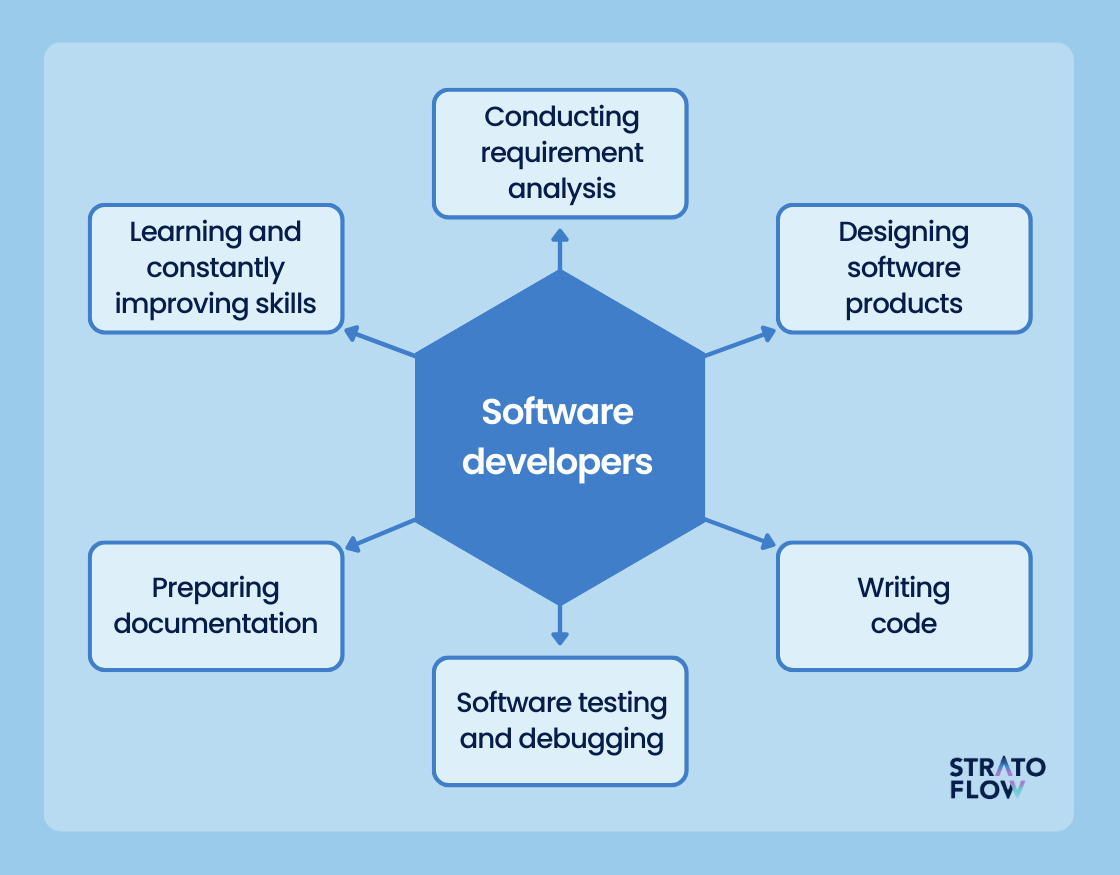Finding the Ideal Software Development Partner for Innovative Solutions
Finding the Ideal Software Development Partner for Innovative Solutions
Blog Article
Dedicated Developers vs. In-House Teams: Which Is Right for You?
The decision between making use of devoted programmers and keeping an in-house team is a significant one that can impact the trajectory of your tasks and overall business technique. Devoted programmers offer a level of flexibility and specific proficiency that can be advantageous for details, temporary campaigns. Conversely, internal groups add to a natural firm culture and a nuanced understanding of long-lasting goals. By checking out crucial factors such as spending plan, project range, and wanted control, you can much better figure out which method aligns with your organizational requirements. The implications of this selection extend beyond prompt end results-- take into consideration the wider impact on your service landscape.
Understanding Devoted Developers
The expanding need for specialized abilities in the tech market has resulted in the development of dedicated developers as a sensible option for many companies. These specialists are commonly contracted on a task basis, allowing firms to leverage certain know-how without the lasting commitment related to permanent hires. Devoted developers are commonly ingrained within a customer's team, giving flexibility and scalability to meet job needs.
This model allows companies to access a global talent pool, which is especially helpful in a quickly advancing technological landscape. Committed developers can be sourced from various geographical areas, guaranteeing that firms can locate the best skill set at competitive rates. They commonly bring a riches of experience and expertise, having actually serviced diverse projects throughout various industries.
Additionally, dedicated programmers can focus exclusively on the jobs available, enhancing productivity and efficiency. They are furnished to incorporate perfectly right into existing operations, teaming up closely with in-house teams to attain project goals. This method not just lowers the worry of recruitment and training however likewise permits companies to remain active, adapting quickly to transforming market demands and technological innovations.
Advantages of In-House Teams

Furthermore, internal teams tend to have a much deeper understanding of the business's goal, worths, and goals. This alignment can enhance staff member involvement and motivation, as group members really feel a lot more linked to their work and the organization's success. Additionally, having a committed internal group enables for far better alignment of methods and objectives, as these participants are consistently concentrated on the company's concerns.
In-house groups likewise help with quicker decision-making procedures, as they can respond much more rapidly to obstacles and adjustments. The recognized connections and familiarity with business protocols permit structured workflows and minimized miscommunication. Ultimately, the combination of a natural society, placement with organizational objectives, and efficient communication makes internal groups a beneficial asset for lots of organizations, especially those seeking to grow long-lasting growth and technology.
Price Factors To Consider
When evaluating price considerations, both internal groups and committed programmers present distinctive financial read here effects for organizations. Engaging specialized designers generally involves a pay-per-project or hourly price version, which can be cost-effective for businesses with changing task demands. This strategy enables adaptability in scaling resources up or down, guaranteeing that companies just spend for the solutions they need.
In comparison, in-house teams involve dealt with prices, consisting of incomes, benefits, and overhead expenses such as office room and devices. While this model provides better control and immediate schedule of sources, it might cause higher long-lasting costs, particularly if the work does not validate a full-time staff.
In addition, companies should think about the covert expenses connected with recruitment and training of internal staff members, which can better stress spending plans. In go to this website many cases, the time and resources invested in handling an in-house group can detract from the organization's core company goals.

Task Administration and Versatility
Project monitoring and flexibility are critical variables that influence the option in between specialized designers and internal groups. Committed designers typically supply a high level of adaptability, allowing organizations to range resources up or down based on task needs. This dexterity can be especially beneficial for services experiencing changing workloads or those seeking to innovate swiftly. Dedicated teams typically have developed procedures for handling projects successfully, leveraging particular methodologies like Agile or Scrum, which facilitate repetitive progression and adaptability.

Eventually, the option between in-house groups and specialized programmers depends upon the desired degree of adaptability and the particular project management demands. Firms must evaluate their functional dynamics, project intricacy, and source availability to establish which alternative aligns finest with their tactical purposes.
Making the Right Choice
Picking the appropriate development strategy-- dedicated developers or in-house groups-- requires a mindful analysis of various factors that line up with a company's strategic goals. Conversely, in-house teams can give far better connection and assimilation with existing workers.
Following, review your budget. Dedicated designers typically present an affordable remedy for temporary tasks, while internal groups might sustain greater lasting expenditures as a result of wages, benefits, and expenses expenses. Assess the level of control and partnership desired; in-house teams commonly cultivate stronger communication and alignment with business society.
Furthermore, take into consideration the moment structure. If immediate results are required, dedicated programmers can be onboarded quickly, whereas constructing an internal group takes time for recruitment and training. Evaluate the lasting vision of your organization. Investing in an internal group might generate far better returns over time if continual development is vital. Ultimately, the choice depends upon an extensive analysis of these aspects, guaranteeing placement with your firm's operational demands and general purposes.
Final Thought
In conclusion, the choice between specialized programmers and in-house groups depends upon project requirements and business goals. Dedicated programmers supply flexibility and specialized proficiency, making them suitable for short-term efforts. Conversely, internal teams cultivate a cohesive society and deeper positioning with long-lasting objectives. Careful evaluation of spending plan constraints, task timelines, and desired control levels is crucial for figuring out the most proper strategy, making certain positioning with tactical priorities and functional effectiveness.
The decision in between utilizing devoted designers and maintaining an internal team is a considerable one that can influence the trajectory of your tasks and general organization approach.Job monitoring and adaptability are crucial aspects that influence the selection in between dedicated programmers and internal teams. software development partner.In contrast, internal groups may succeed in keeping a consistent project administration framework due to their experience with the organization's culture and long-term goals. Committed developers often provide a cost-effective service for short-term tasks, while internal teams may sustain higher lasting costs due to incomes, advantages, and overhead costs.In conclusion, the choice between specialized developers and internal teams pivots on project demands and organizational objectives
Report this page